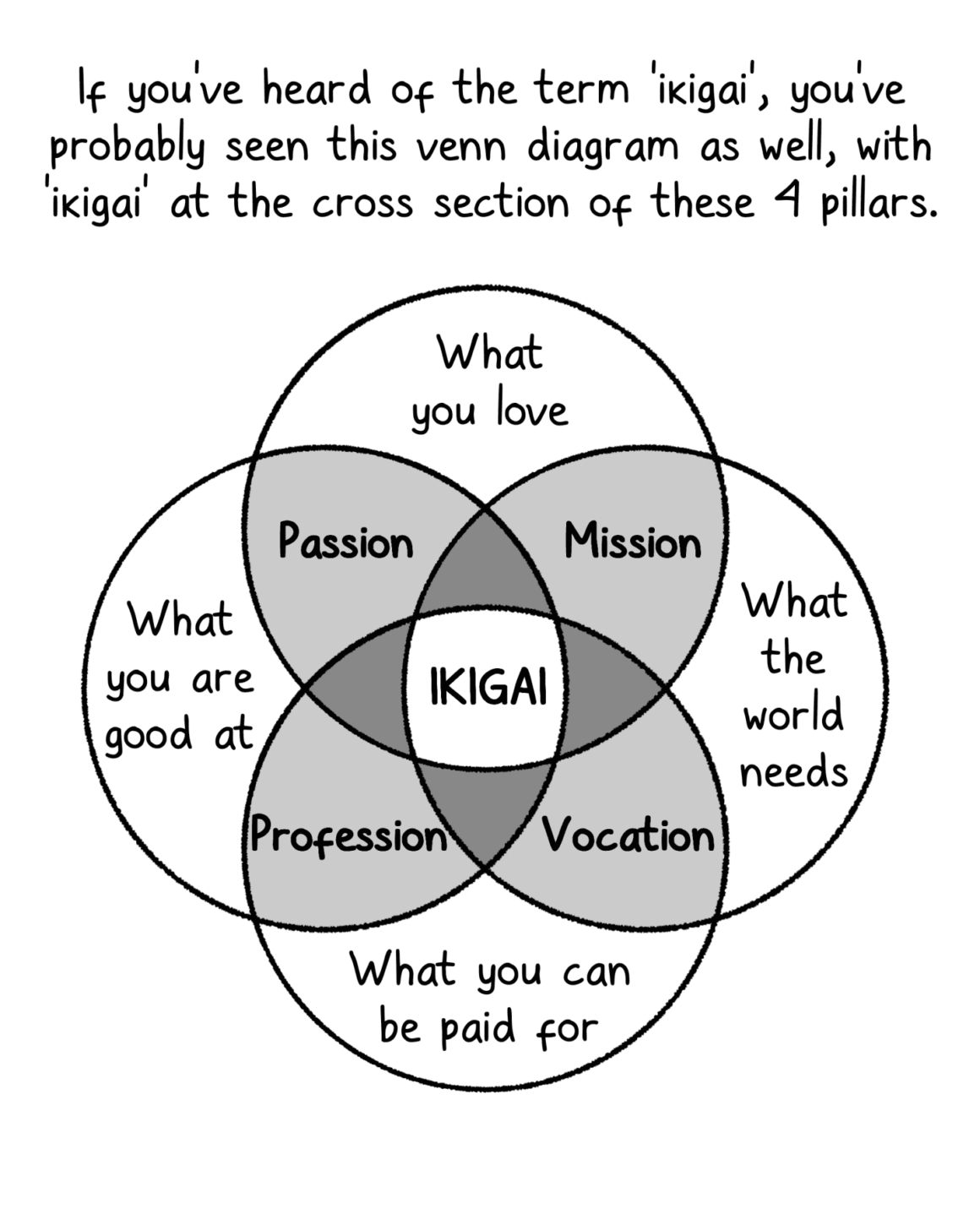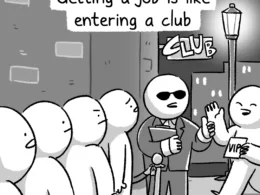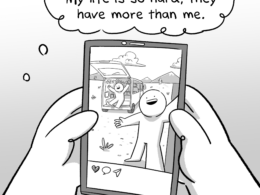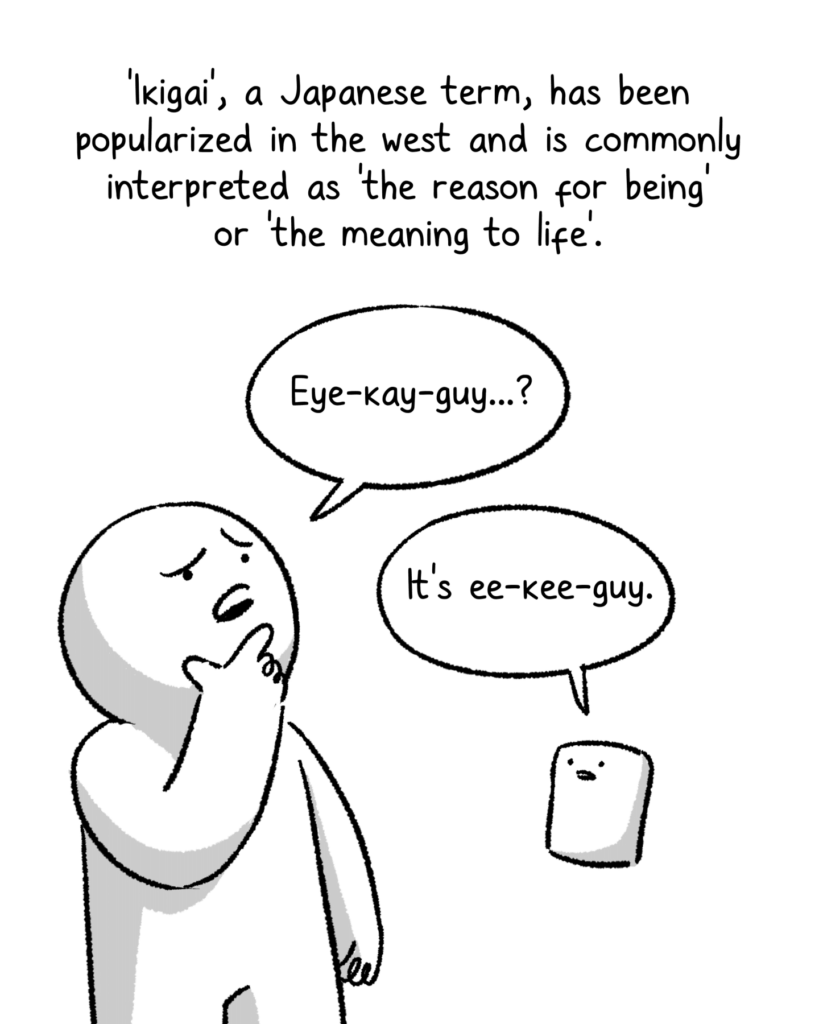
Ikigai’, a Japanese term, has been popularized in the West and is commonly interpreted as ‘the reason for being’ or the meaning of life.
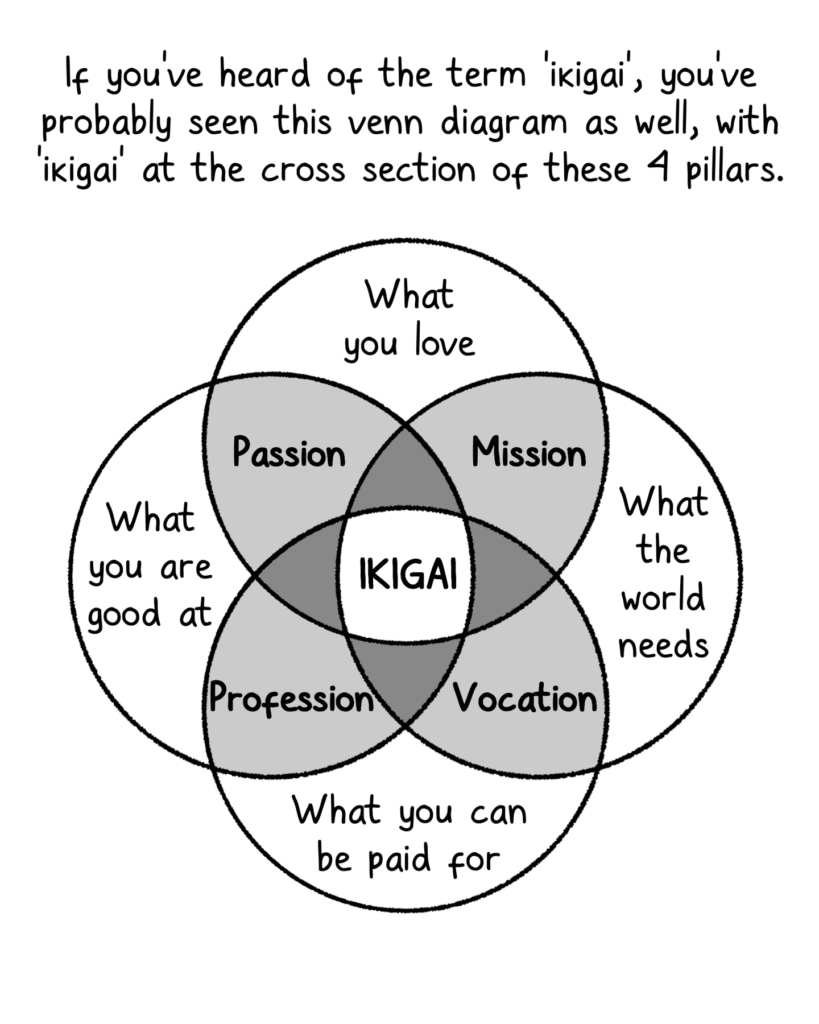
If you’ve heard of the term ‘ikigai,’ you’ve probably seen this Venn diagram, with ‘ikigai’ at the cross-section of these four pillars.
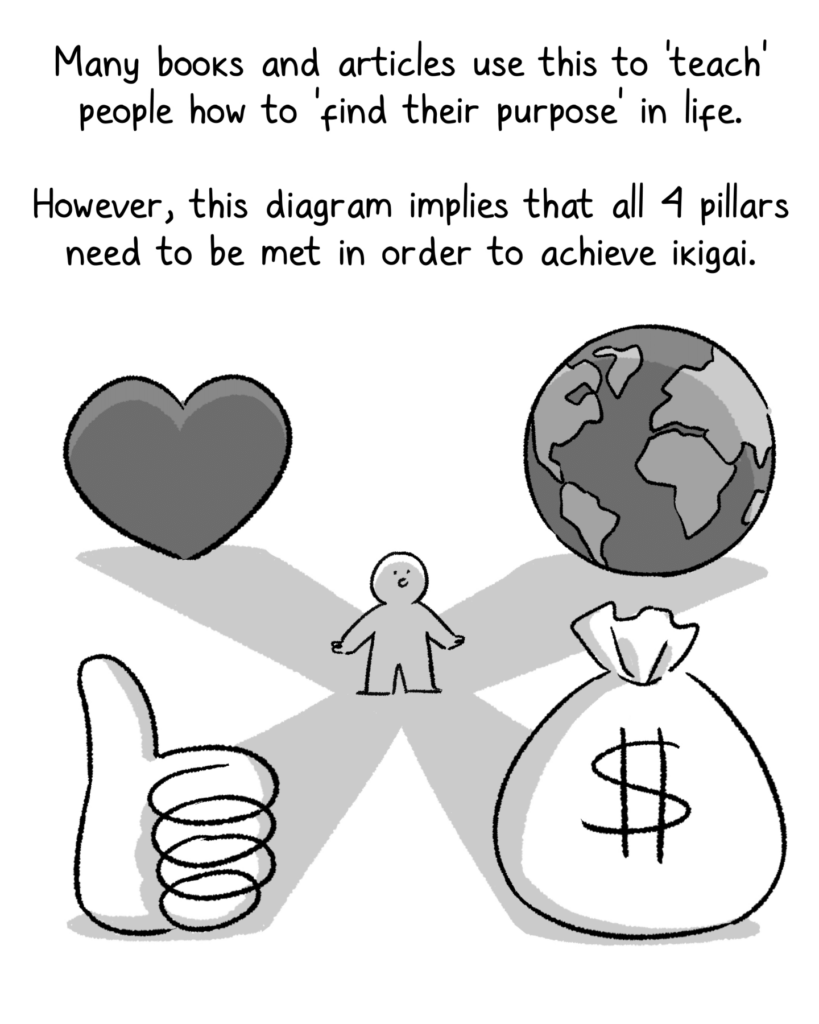
Many books and articles use this to ‘teach’ people how to find their purpose in life.
However, this diagram implies that all four pillars must be met to achieve ikigai.
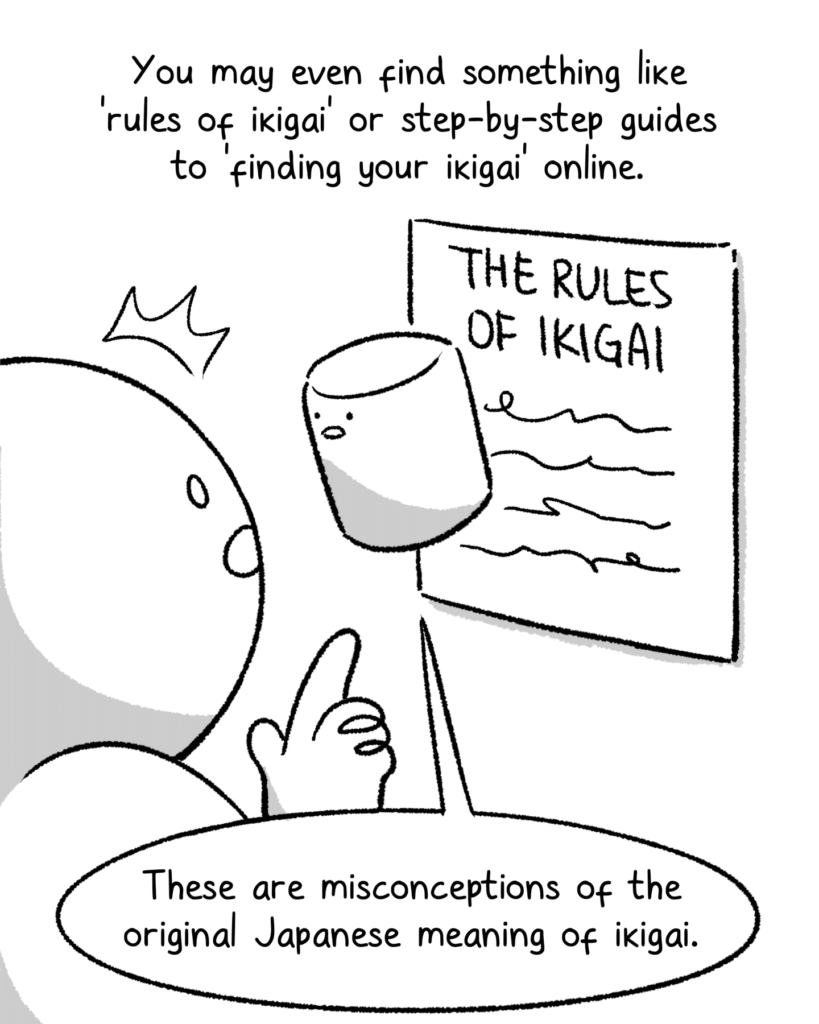
You may even find something like ‘rules of ikigai or step-by-step guides to finding your ikigai’ online. These are misconceptions of the original Japanese meaning of ikigai.
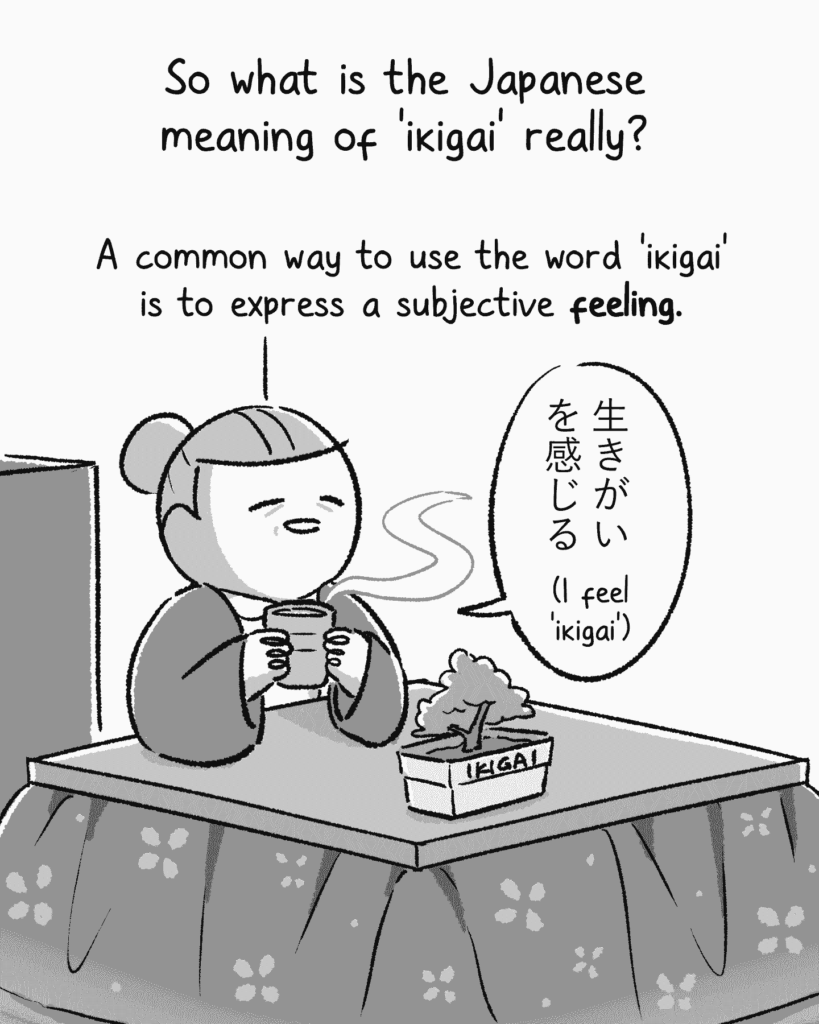
So what is the Japanese meaning of ‘ikigai’ really? A common way to use ‘ikigai’ is to express a subjective feeling.
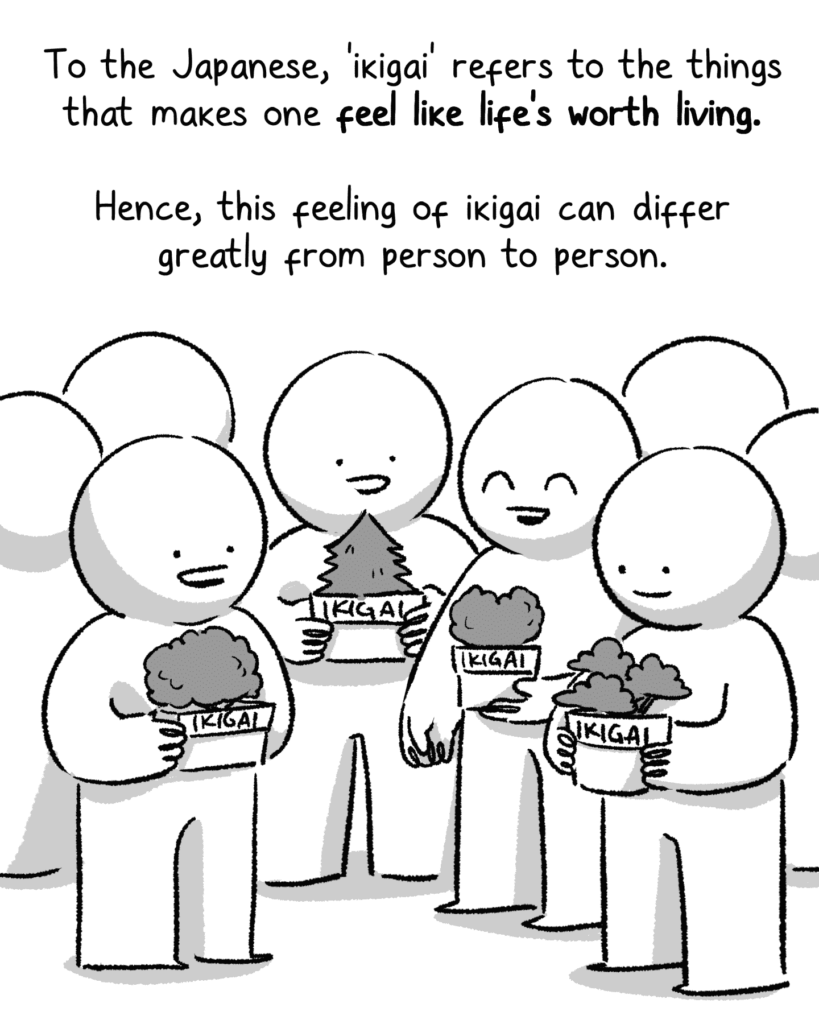
To the Japanese, ikigai’ refers to the things that make one feel like life’s worth living. Hence, this feeling of ikigai can differ greatly from person to person.
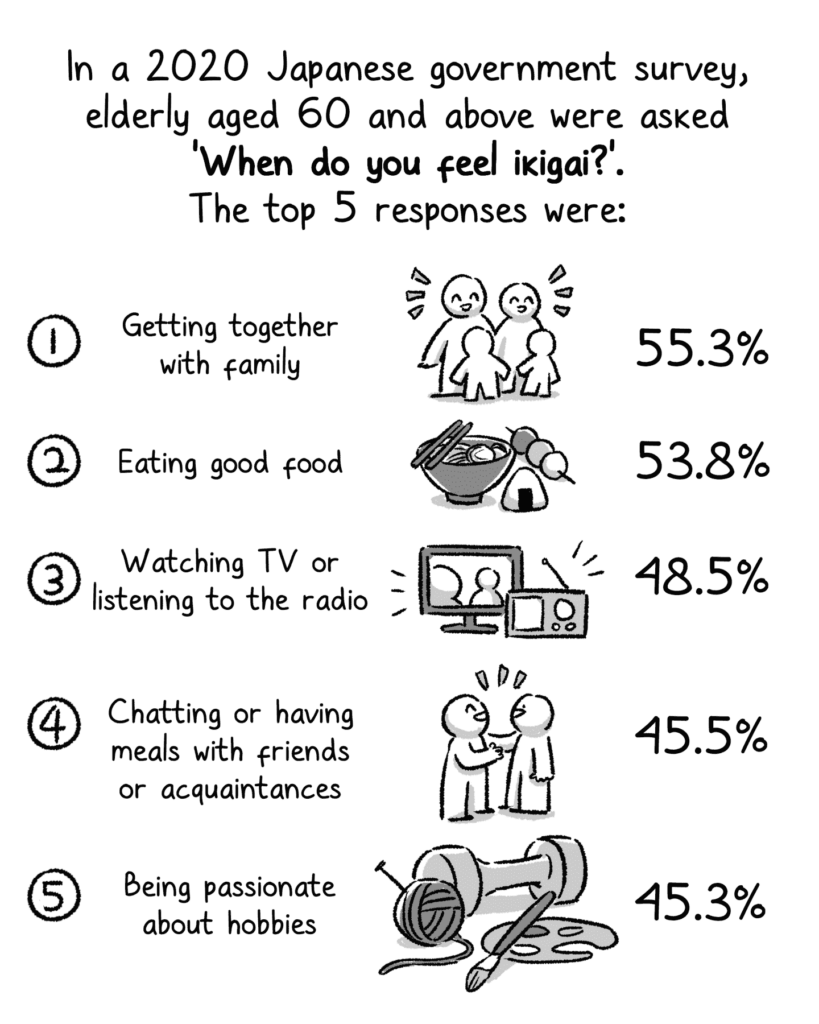
In a 2020 Japanese government survey, elderly 60 and above were asked, ‘When do you feel ikigai?’. The top 5 responses were:
(1)Getting together with family 55.3%
(2) Eating good food 53.8%
(3) Watching TV or listening to the radio, 48.5%
(4) Chatting or having meals with friends or acquaintances опо 45.5%
(5) Being passionate about hobbies 45.3%
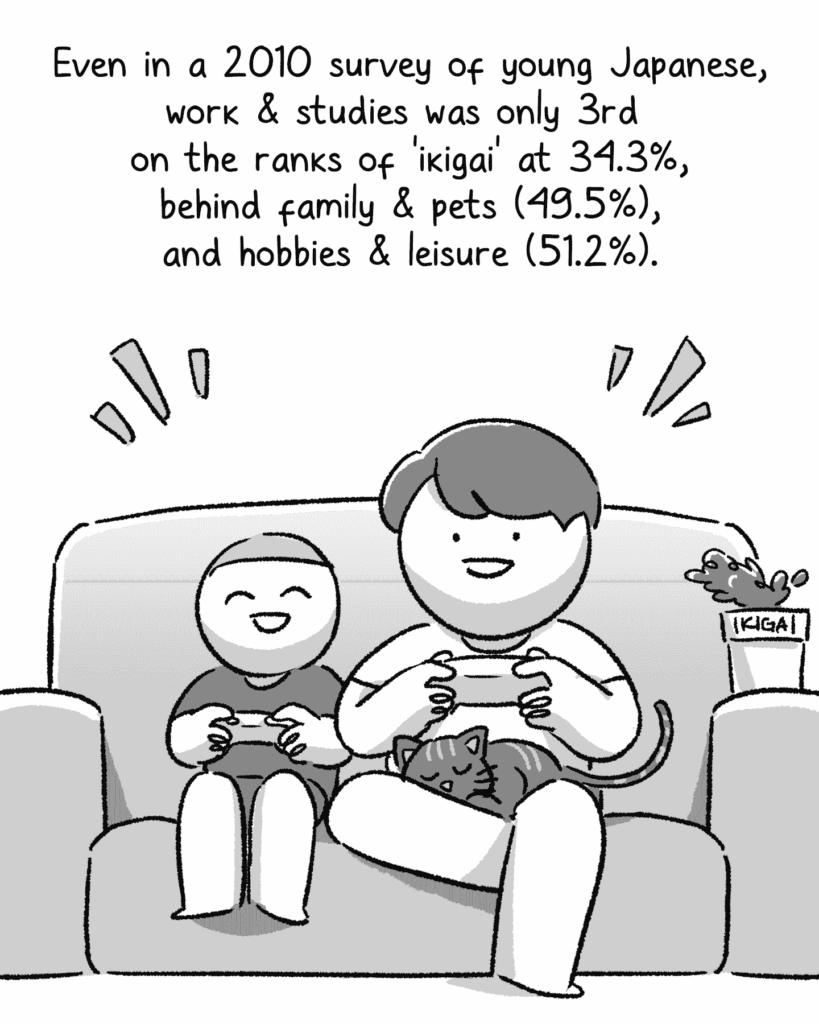
Even in a 2010 survey of young Japanese, work & studies were only 3rd on the ranks of ‘ikigai’ at 34.3%, behind family & pets (49.5%) and hobbies & leisure (51.2%).
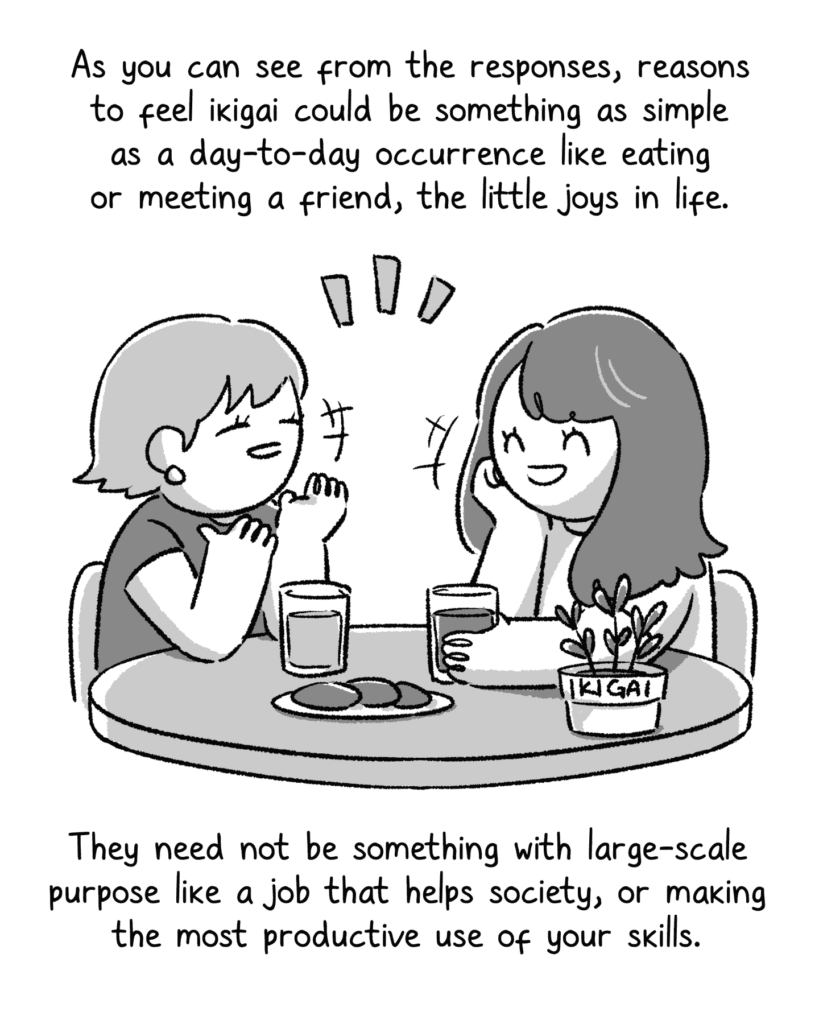
As you can see from the responses, reasons to feel ikigai could be something as simple as a day-to-day occurrence like eating or meeting a friend, the little joys in life. They need not be something with large-scale purpose like a job that helps society or making the most productive use of your skills.
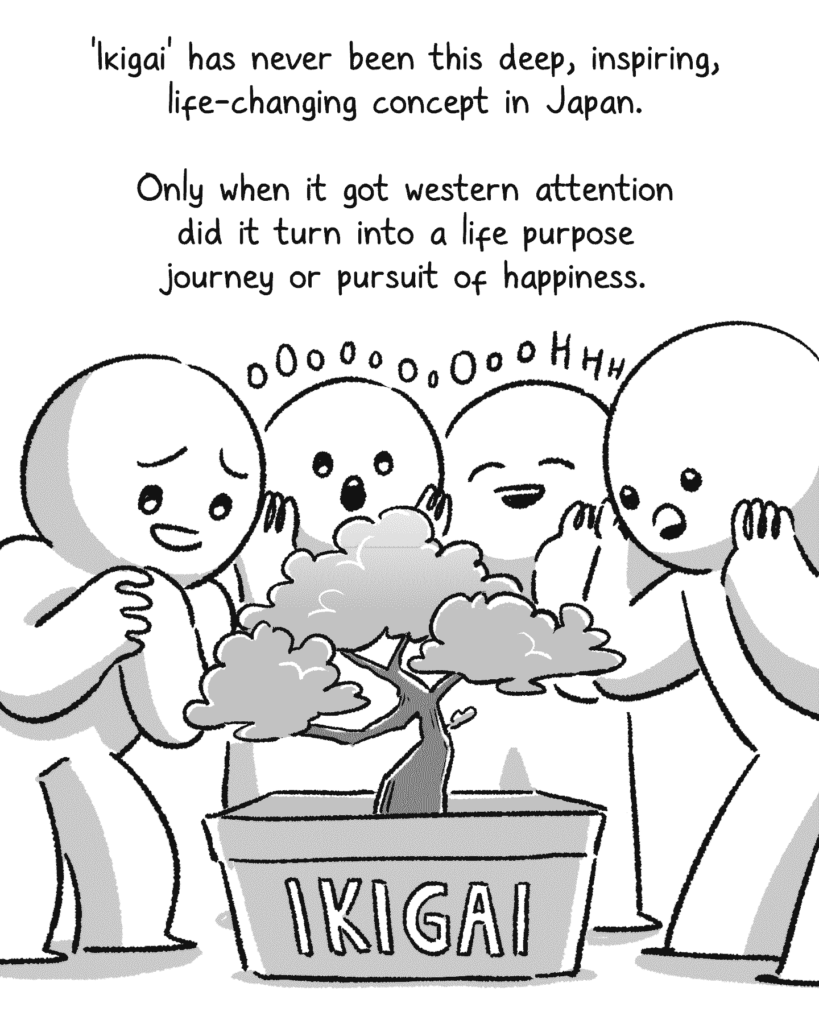
Ikigai’ has never been this deep, inspiring, life-changing concept in Japan. Only when it got Western attention did it turn into a life-purpose journey or pursuit of happiness.
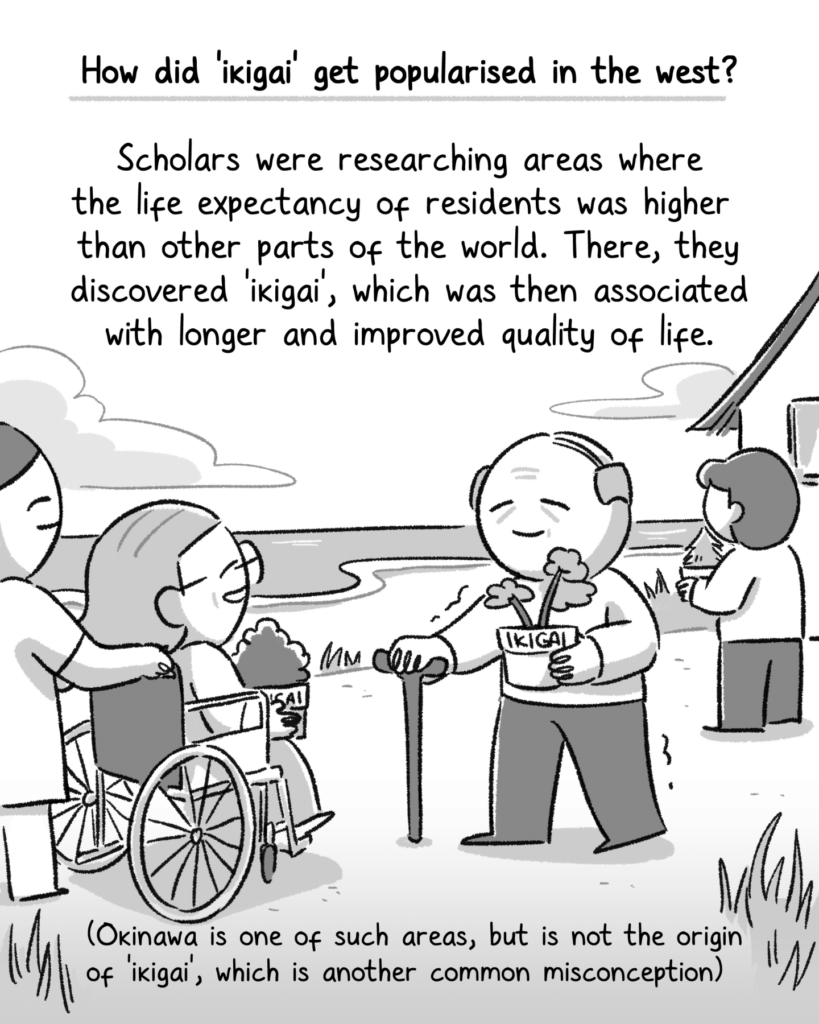
How did ‘ikigai’ get popularised in the West?
Scholars were researching areas where the life expectancy of residents was higher than in other parts of the world. There, they discovered ‘ikigai,’ associated with a longer and improved quality of life. (Okinawa is one of such areas, but is not the origin of ‘ikigai,’ which is another common misconception)
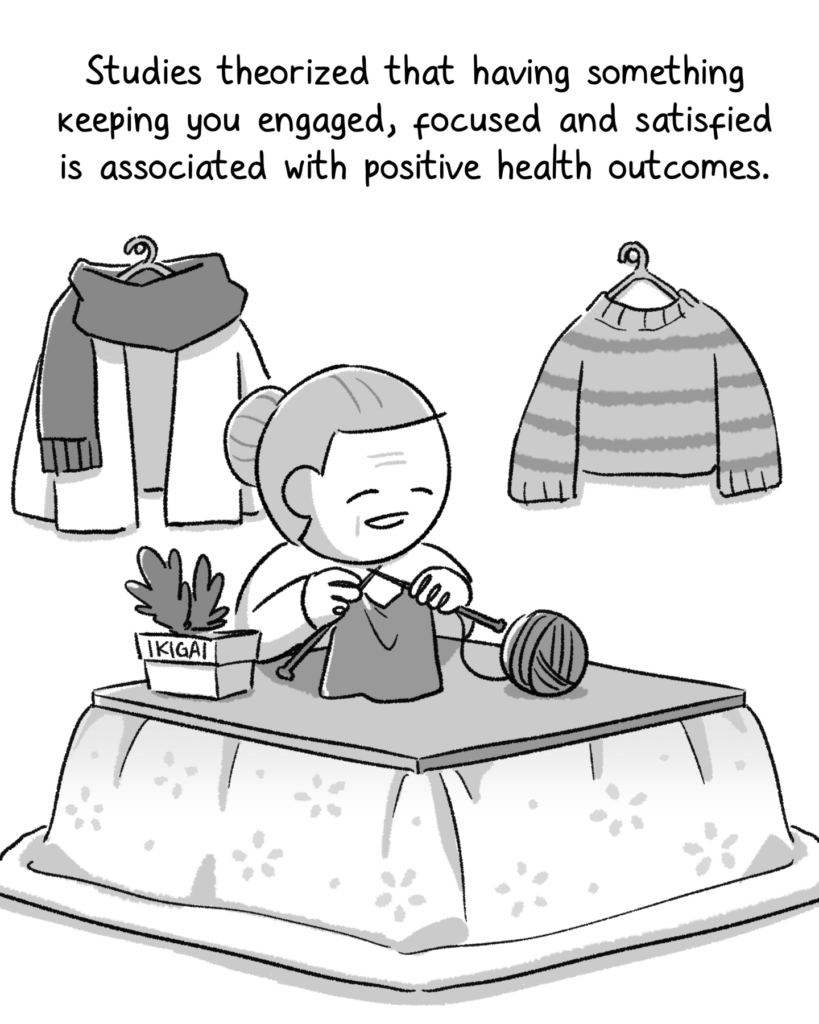
Studies theorized that having something that keeps you engaged, focused, and satisfied is associated with positive health outcomes.

Hence, it led to the boom of ‘ikigai’ and many wanting to share the concept of ‘how to find one’s ikigai’ to lead to more fulfilling and longer lives.
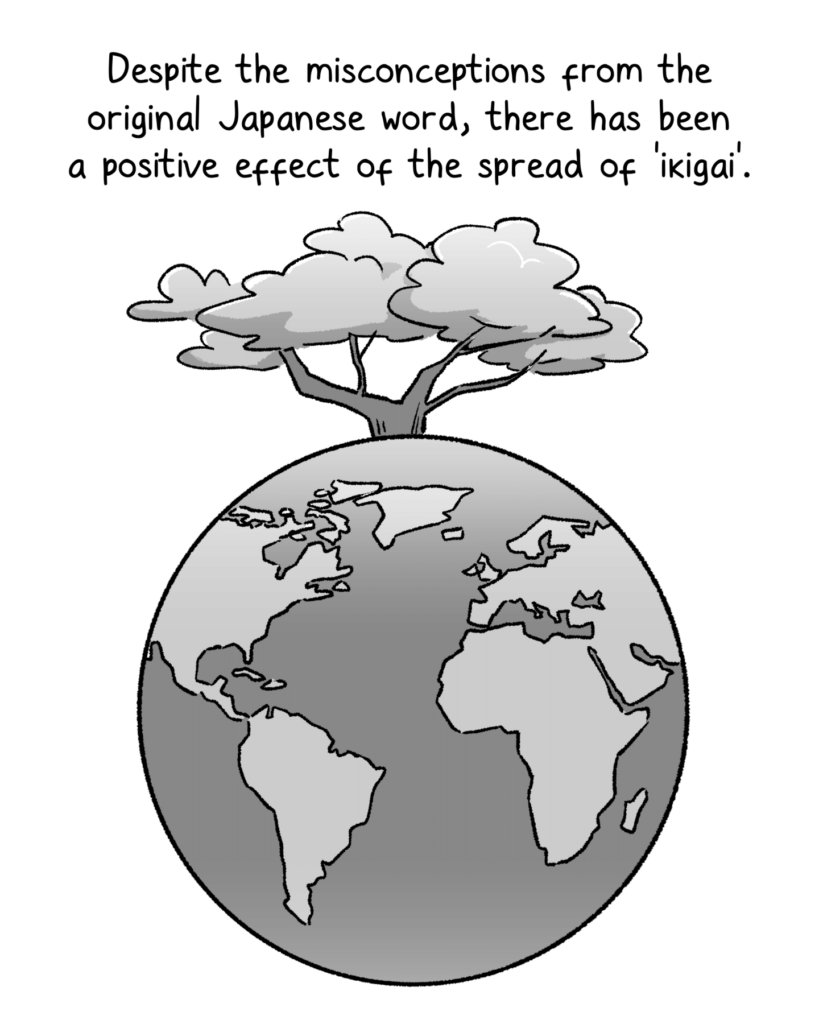
Despite the misconceptions about the original Japanese word, there has been a positive effect of the spread of ‘ikigai.’
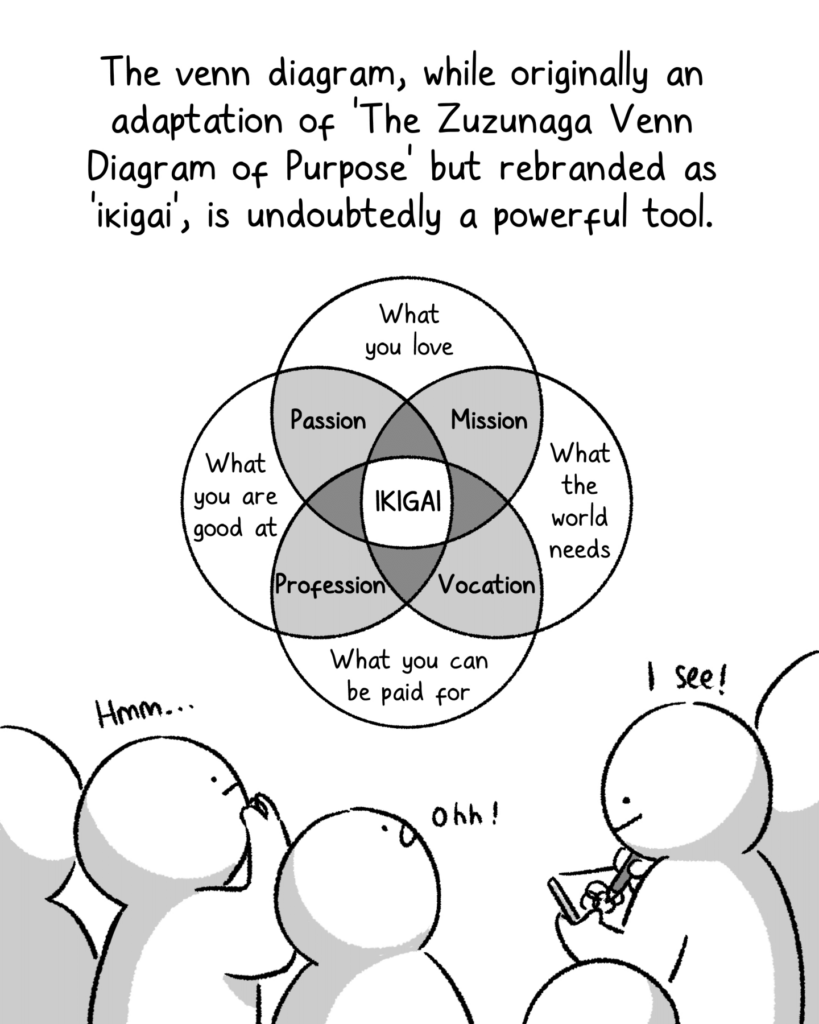
The Venn diagram, while originally an adaptation of ‘The Zuzunaga Venn Diagram of Purpose’ but rebranded as ‘ikigai,’ is undoubtedly a powerful tool.
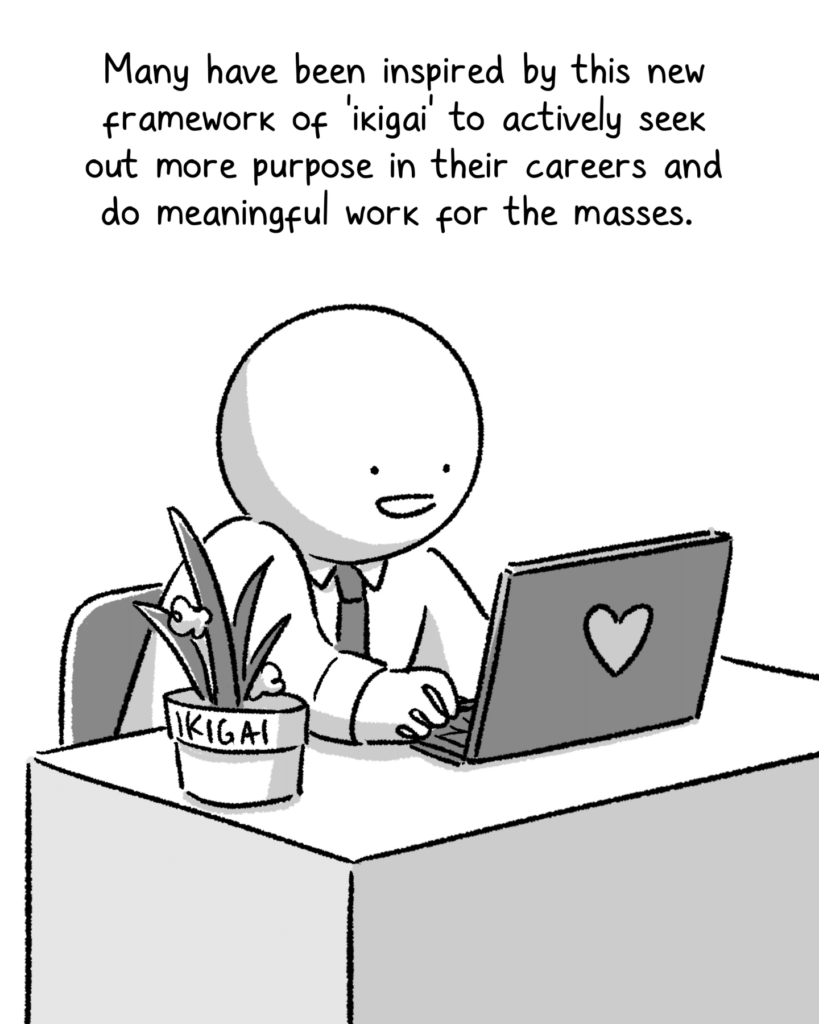
Many have been inspired by this new framework of ‘ikigai’ to seek out more purpose in their careers actively and do meaningful work for the masses.

That leads to greater fulfillment and satisfaction in life, as the individual sees the value they bring to the world through their skills and the things they enjoy.

But on the flip side, some others worry or feel pressured about being unable to find their ikigai. I enjoy my hobby, but I don’t know how to turn it into my career or use it to help society… I don’t know my purpose and direction in life…. I’m never going to find my ikigai!
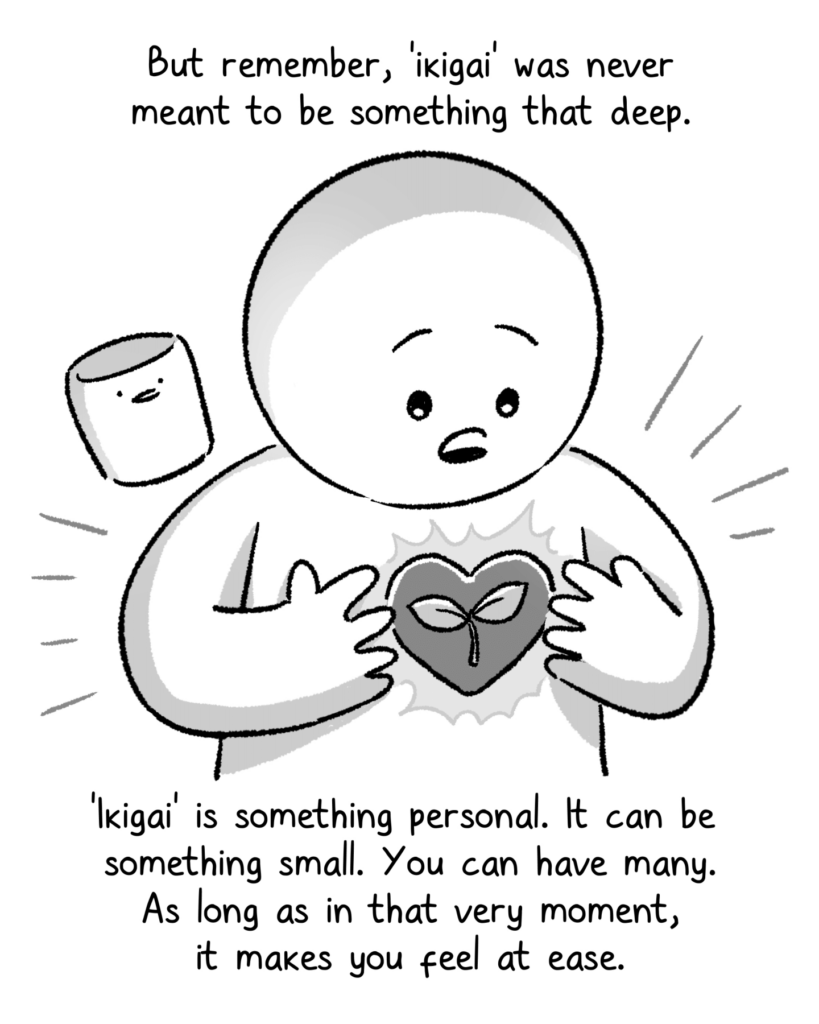
But remember, ‘ikigai’ was never meant to be something that deep.
Ikigai’ is something personal. It can be something small. You can have many. As long as, in that very moment, it makes you feel at ease.
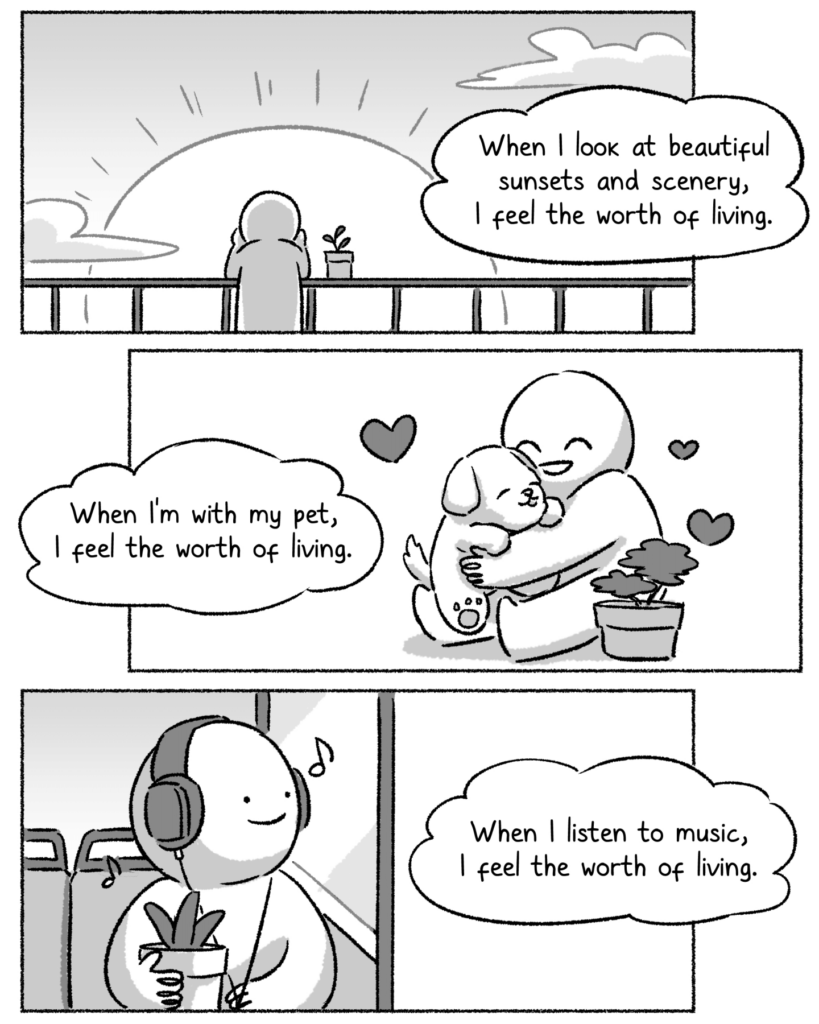
When I look at beautiful sunsets and scenery, I feel the worth of living. When I’m with my pet, I feel the worth of living. When I listen to music, I feel the worth of living.

If you managed to make your profession your ikigai, that’s great.
But if not, it’s equally as valid as ikigai too. All that matters is that it’s your ikigai.
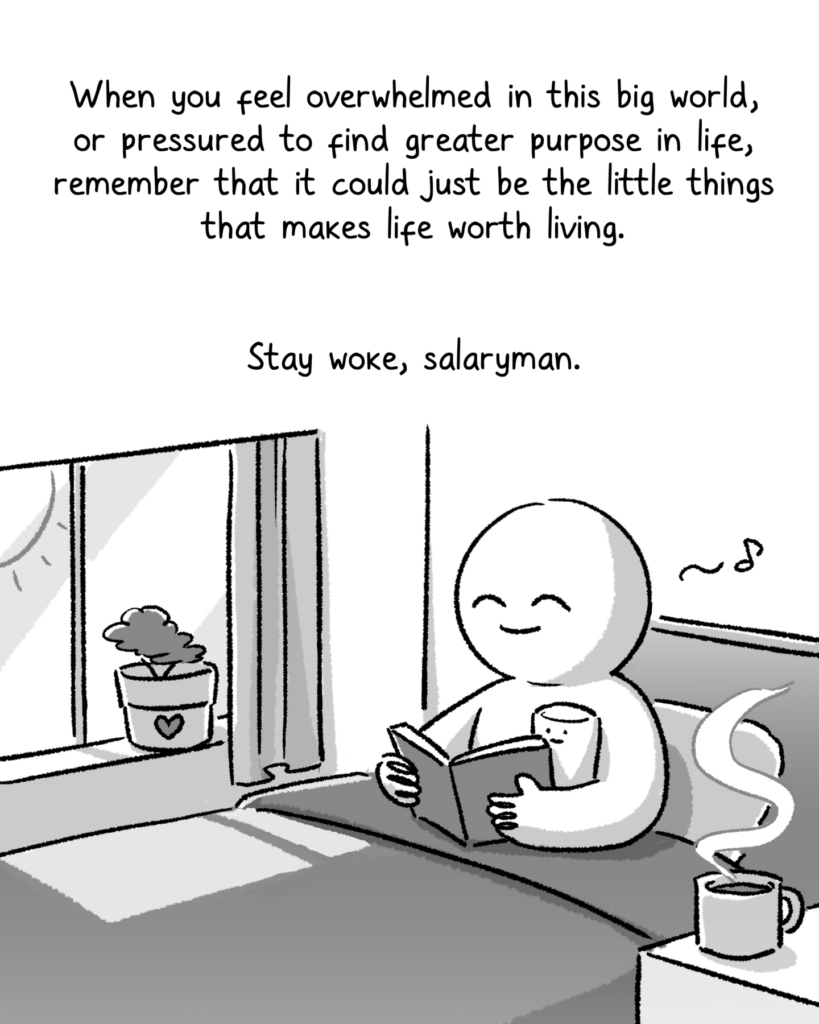
When you feel overwhelmed in this big world or pressured to find a greater purpose in life, remember that it could just be the little things that make life worth living.






